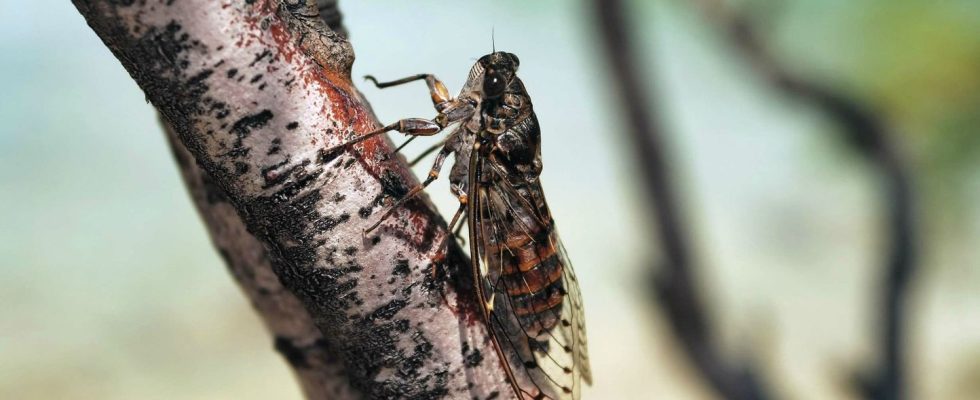Egypt had locusts, the United States has cicadas. Noisy and ready to mate, billions of cicadas are preparing to invade American forests and suburban suburbs. In the coming weeks, two particular groups of cicadas will frolic at the same time. A phenomenon that has not happened since 1803, when Thomas Jefferson was still president and the United States bought Louisiana from France.
The cicada family includes more than 3,000 species of insects around the world. The majority of them spend their lives underground, in the form of larvae. They emerge as adults to molt and reproduce. Some appear every year, while others, called “periodic” cicadas, emerge every 13 or 17 years.
Convergence of two phenomena
This year, the phenomenon involves two groups of cicadas: group XIX, which emerges every 13 years and has already started to do so in North and South Carolina (southeastern United States). It will be followed by Group XIII in the Midwest, which emerges every 17 years. In central Illinois (north), both could be present in the same place.
“When they surface, they do so in large numbers, which excites parents and children,” according to entomologist Gene Kritsky, of Mount Saint-Joseph University, who developed an application so that everyone can collect data on these red-eyed critters.
A phenomenon that we remember, and whose stories are passed down from generation to generation. Just like, for example, witnessing an eclipse.
Consequences on fauna and flora
Without much defense, the “periodic” cicadas rely on their numbers for the survival of the species: thanks to the hordes that surge at the same time, the birds, foxes, raccoons, turtles and other predators are quickly satisfied, explains to the AFP John Lill, professor of biology at George Washington University.
In a study published recently in the journal Science, John Lill and his colleagues show that a group of cicadas that emerged in Washington in 2021 led to an increase in the number of caterpillars, abandoned by birds, which concentrated on the cicadas .
Result: consumption of young oak shoots has increased.
Potential ecological impacts
Other research shows that the years when oak trees produce the most acorns always follow two years after cicadas emerge. The more acorns there are, the more the populations of mammals that feed on them grow, the greater the risk of Lyme disease in humans.
This phenomenon “shows that there are potentially longer-term ecological impacts reverberating for years after the cicadas appear,” adds John Lill.
Then there is the singular, shrill sound of male cicadas mating. “We have had several calls regarding a sound that sounds like a siren, a wail or a roar,” the Newberry Sheriff’s Office in South Carolina (southeast) said on Facebook this week.
Climate change disrupts their natural cycle
According to Chris Simon, a researcher at the University of Connecticut, climate change is disrupting cicadas’ internal clocks.
With global warming in the United States, the lengthening of the growing season of plants provides more food and accelerates that of cicadas. “I predict that more 17-year-old cicadas will turn into 13-year-old cicadas,” she said, “and eventually that trait will be assimilated genetically.”
It’s unclear what this means for the species in the long term. Likewise, reports John Lill, to know the impact, positive or negative, that the transformation of the land since the colonial era has had on the cicadas.
On the one hand, many historic species have disappeared due to deforestation, but those that remain thrive in suburban suburbs that provide ideal conditions for females to lay their eggs.

